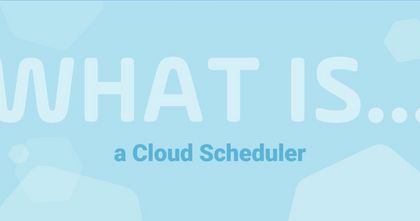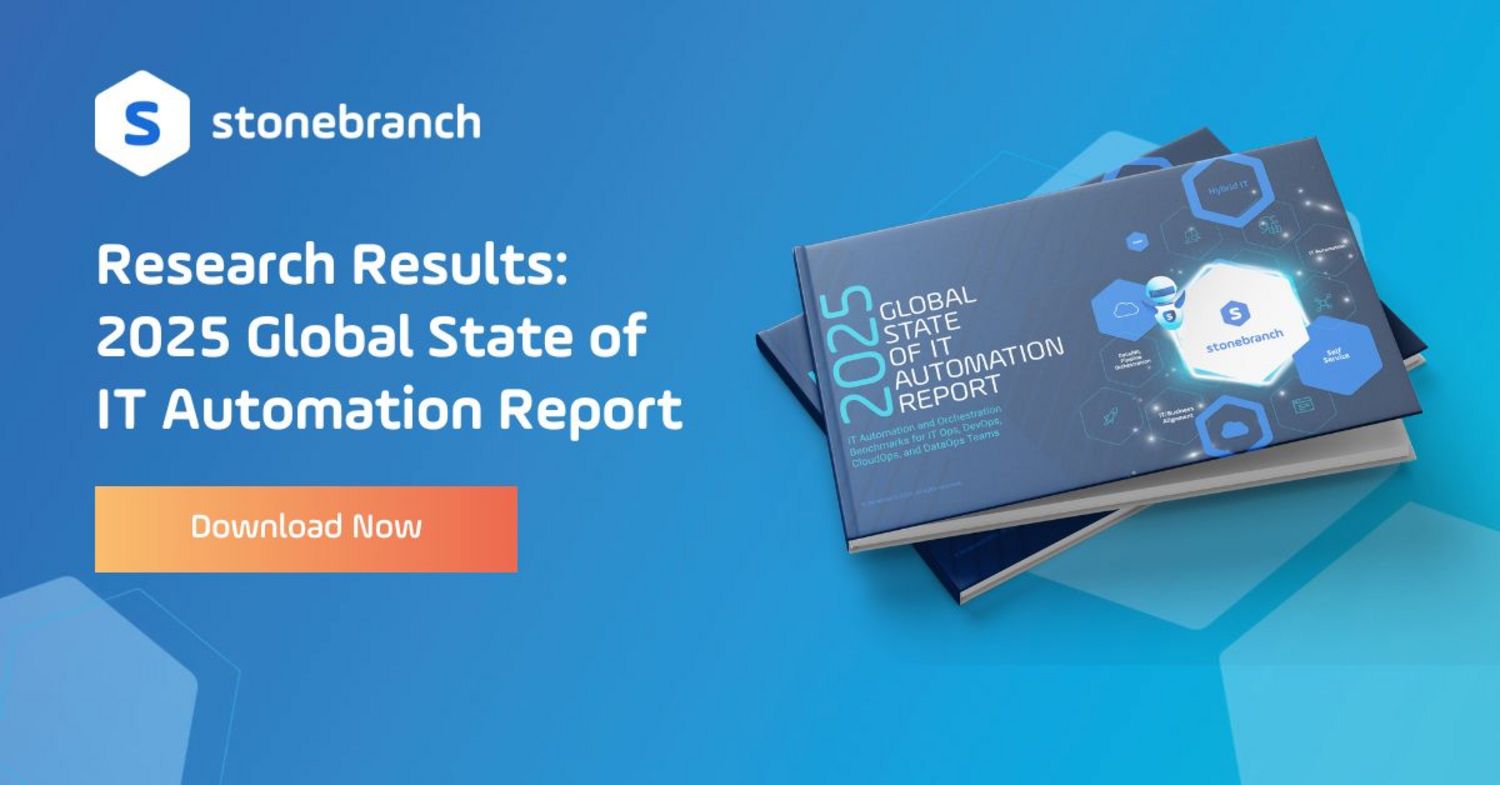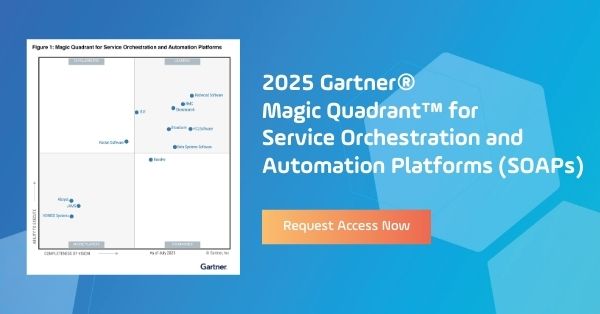What is a Cloud Scheduler?
Cloud schedulers automate anything from cloud infrastructure to data pipelines. Each cloud service provider offers a scheduler with a unique feature set, but they’re all part of a broader group of cloud automation solutions.

A cloud scheduler may have some limitations, but it can be a huge time saver as part of any cloud investment. With a need to automate a lengthy list of online services, cloud service providers (CSP), including AWS, Google Cloud Platform (GCP), and Microsoft Azure, each developed their own platform-centric automation tools. These cloud-native schedulers are finely tuned to automate their own ecosystems.
Here we look at cloud schedulers, their role in cloud automation, and how meta-orchestration can help when you need to orchestrate across multiple cloud providers… or even beyond the cloud.
What is a Cloud Scheduler?
By definition, cloud schedulers automate IT processes for cloud service providers. End-users leverage schedulers to automate tasks, or jobs, that support anything from cloud infrastructure to big data pipelines to machine learning processes. Most often, they are stand-alone tools offered as-a-service by cloud providers, including AWS, Google Cloud, and Microsoft Azure.
For example, AWS offers two schedulers: AWS Batch for time-based batch jobs and AWS Lambda for event-based jobs. These two tools can automate tasks across any of the many AWS applications, such as S3, EC2, SQS, and so on.
Similarly, Google Cloud Platform offers Google Cloud Scheduler to automate everything from cloud infrastructure operations to big data jobs. Microsoft Azure Logic Apps is Microsoft’s current automation tool; Azure Scheduler was fully retired in January 2022.
What are the Benefits and Limitations of Cloud Schedulers?
Cloud schedulers automate well within their own ecosystems. However, their limitation is just that — they can only schedule processes within their own ecosystem. AWS Batch and Lambda can only automate AWS applications. Google Cloud Scheduler can only automate Google services. You get the idea.
When you can only use the services of a single cloud service provider, vendor lock-in becomes a serious concern. No one wants to be utterly dependent upon one vendor — or worse yet, forced to use a single provider — because the cost of change is too high.
Many of today’s enterprises avoid vendor lock-in by using multiple public and private cloud services. In the 2024 Global State of IT Automation report, 91% of respondents reported using at least one public cloud provider. Almost half use two to three public clouds, and approximately one-quarter use four or more public clouds. With so many organizations showing such a strong reliance on multi-cloud infrastructure, it’s no surprise that IT leaders need something more to orchestrate workloads, data pipelines, and file transfers across those clouds.
A Cloud Orchestration Solution that Goes Beyond the Cloud
Complexity is inherent to any multi-cloud environment. According to Deloitte analyst David Linthicum, “Almost every enterprise hits the CloudOps stumbling block when they migrate apps and data to the cloud because increased heterogeneity and complexity are a byproduct of every cloud move and build.”
To overcome this complexity, it’s essential to rise above the clouds to orchestrate workflows that span cloud resources and on-prem systems alike. This can be done by replacing the individual cloud schedulers with an orchestration solution designed for hybrid IT environments. Alternatively, that same orchestration solution can be used as a meta-orchestrator that integrates with and presides over the existing cloud schedulers.
In multi-cloud environments, meta-orchestration becomes exponentially important to eliminate any vendor lock-in. By conducting all scheduling and automation from a single, centralized platform, it’s possible to transfer files, move data, manage workflows between cloud providers and on-prem systems.
Next Steps
A service orchestration and automation platform (SOAP) rises above the cloud to amplify its benefits — flexibility, speed, scalability — all from a single lens. These platforms enable:
- Orchestration of automated workflows across hybrid IT environments: With a SOAP, enterprises are able to remove automation silos by creating workflows that connect the dots between cloud, on-premises, and containerized microservices.
- Real-time resource control and event-based scheduling: In fact, a SOAP can apply event-based triggers to a time-based cloud scheduler. Or you can skip using cloud-based schedulers altogether and directly connect to the cloud service you need to automate.
- Self-service automation for IT professionals and business users alike: By design, SOAPs help you offer automation-as-a-service to your business, including IT Ops, data, development, cloud architect, and business user teams. End-users gain the ability and speed they need to create automation, trigger workflows, and dashboards customized to their role — all without needing help from the central IT automation group.
- Central control, management, and auditability of IT automation: In addition to having visibility into centrally created automation programs, the IT Operations groups gain insight and observability into the programs that other teams are running.
SOAPs achieve these results by easily integrating with any cloud service provider or cloud-based application — without customization. The Stonebranch Universal Automation Center (UAC) is a SOAP that takes a platform approach to rapidly develop new integrations and empowers customers to do the same.
Want to learn more about orchestrating multi-cloud and hybrid IT environments? Check out the UAC cloud automation page, see how meta-orchestration simplifies complex IT environments, or contact Stonebranch to schedule a virtual demo with an orchestration expert.
Start Your Automation Initiative Now
Schedule a Live Demo with a Stonebranch Solution Expert






